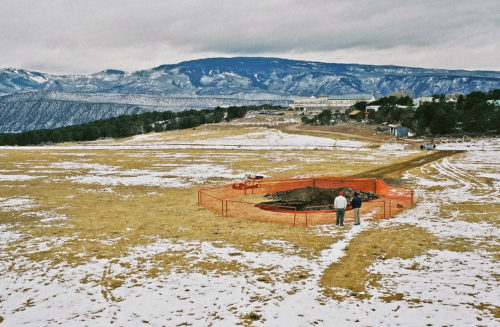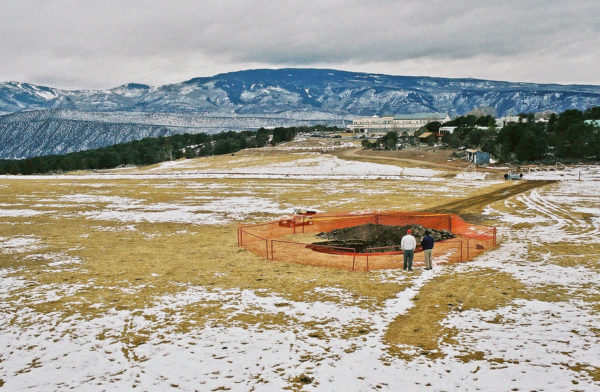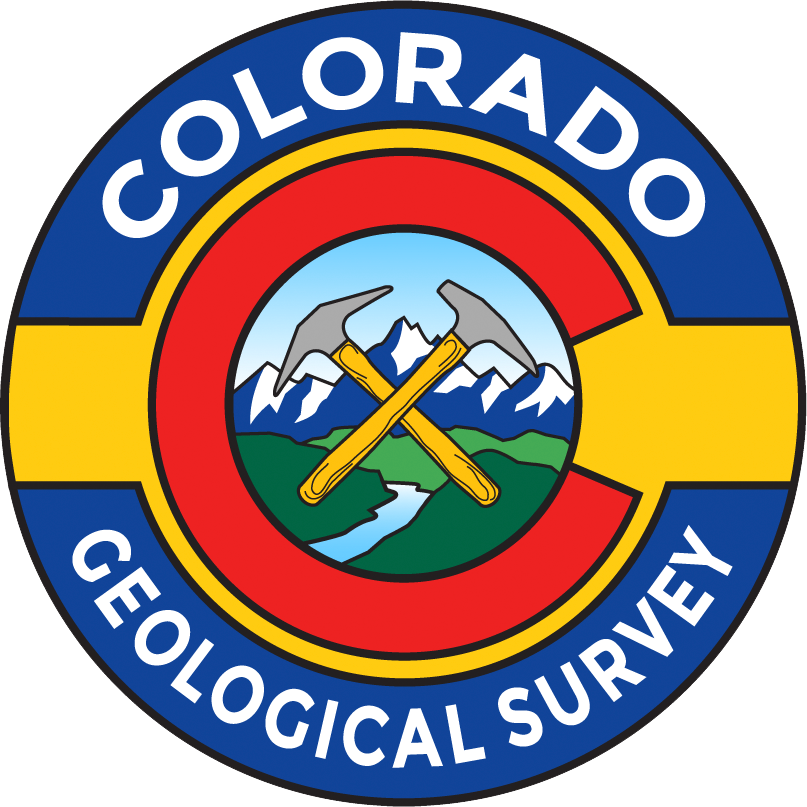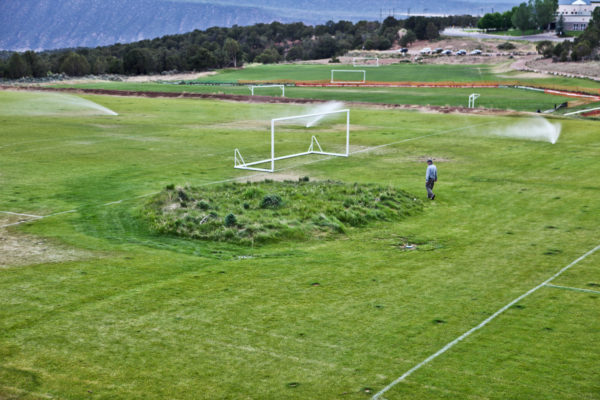Kirkham, Robert M., and Robert B. Scott. “Introduction to Late Cenozoic Evaporite Tectonism and Volcanism in West-Central Colorado.” In
Late Cenozoic Evaporite Tectonism and Volcanism in West-Central Colorado, by Robert M. Kirkham, Robert B. Scott, and Thomas W. Judkins. Geological Society of America, 2002.
https://doi.org/10.1130/0-8137-2366-3.1.
Kirkham, Robert M., Randall K. Streufert, and James A. Cappa. “MS-35 Geologic Map of the Shoshone Quadrangle, Garfield County, Colorado.” Geologic, 1:24,000. Map Series. Denver, CO: Colorado Geological Survey, Department of Natural Resources, 2008.
https://coloradogeologicalsurvey.org/publications/geologic-map-shoshone-quadrangle-garfield-colorado-2.
———. “OF-95-04 Geologic Map of the Shoshone Quadrangle, Garfield County, Colorado.” Geologic, 1:24,000. Open File Report. Denver, CO: Colorado Geological Survey, Division of Minerals and Geology, Department of Natural Resources, 1997.
https://coloradogeologicalsurvey.org/publications/geologic-map-shoshone-quadrangle-garfield-colorado.
Kirkham, Robert M., Randall K. Streufert, H. Thomas Hemborg, and Peter L. Stelling. “OF-14-14 Geologic Map of the Cattle Creek Quadrangle, Garfield County, Colorado.” Geologic, 1:24,000. Open File Reports. Golden, CO: Colorado Geological Survey, 2014.
https://coloradogeologicalsurvey.org/publications/geologic-map-cattle-creek-quadrangle-garfield-colorado.
Kirkham, Robert M., Randall K. Streufert, Michael J. Kunk, James R. Budahn, Mark R. Hudson, and William J. Perry. “Evaporite Tectonism in the Lower Roaring Fork River Valley, West-Central Colorado.” In
Late Cenozoic Evaporite Tectonism and Volcanism in West-Central Colorado, by Robert M. Kirkham, Robert B. Scott, and Thomas W. Judkins. Geological Society of America, 2002.
https://doi.org/10.1130/0-8137-2366-3.73.
Kirkham, Robert M., and Beth Widmann. “MS-36 Geologic Map of the Carbondale Quadrangle, Garfield County, Colorado.” Geologic, 1:24,000. Map Series. Denver, CO: Colorado Geological Survey, Department of Natural Resources, 2008.
https://coloradogeologicalsurvey.org/publications/geologic-map-carbondale-quadrangle-garfield-colorado-2.
Kirkham, Robert M., and Beth L. Widmann. “OF-97-03 Geologic Map of the Carbondale Quadrangle, Garfield County, Colorado.” Geologic, 1:24,000. Open File Report. Denver, CO: Colorado Geological Survey, Division of Minerals and Geology, Department of Natural Resources, 1997.
https://coloradogeologicalsurvey.org/publications/geologic-map-carbondale-quadrangle-garfield-colorado.
Kirkham, Robert M., Beth L. Widmann, and Randall K. Streufert. “OF-98-03 Geologic Map of the Leon Quadrangle, Eagle and Garfield Counties, Colorado.” Geologic, 1:24,000. Open File Report. Denver, CO: Colorado Geological Survey, Division of Minerals and Geology, Department of Natural Resources, 1998.
https://coloradogeologicalsurvey.org/publications/geologic-map-leon-quadrangle-eagle-garfield-colorado.
Lidke, D.J., M.R. Hudson, R.B. Scott, R.R. Shroba, M.J. Kunk, W.J. Perry, R.M. Kirkham, et al. “Eagle Collapse Center: Interpretation of Evidence for Late Cenozoic Evaporite-Related Deformation in the Eagle River Basin, Colorado.” In
Late Cenozoic Evaporite Tectonism and Volcanism in West-Central Colorado, by Robert M. Kirkham, Robert B. Scott, and Thomas W. Judkins. Geological Society of America, 2002.
https://doi.org/10.1130/0-8137-2366-3.101.
Streufert, Randall K. “MS-41 Geologic Map of the Mount Sopris Quadrangle, Garfield and Pitkin Counties, Colorado.” Geologic, 1:24,000. Map Series. Denver, CO: Colorado Geological Survey, Department of Natural Resources, 2008.
https://coloradogeologicalsurvey.org/publications/geologic-map-mount-sopris-quadrangle-garfield-pitkin-colorado.
———. “OF-99-07 Geologic Map of the Mount Sopris Quadrangle, Garfield and Pitkin Counties, Colorado.” Geologic, 1:24,000. Open File Reports. Denver, CO: Colorado Geological Survey, Division of Minerals and Geology, Department of Natural Resources, 1999.
https://coloradogeologicalsurvey.org/publications/geologic-map-mt-sopris-quadrangle-garfield-pitkin-colorado.
Streufert, Randall K., Robert M. Kirkham, Timothy J. Schroeder II, and Beth L. Widmann. “OF-08-14 Geologic Map of the Dotsero Quadrangle, Garfield and Eagle Counties, Colorado.” Geologic, 1:24,000. Open File Report. Denver, CO: Colorado Geological Survey, Department of Natural Resources, 2009.
https://coloradogeologicalsurvey.org/publications/geologic-map-dotsero-quadrangle-garfield-eagle-colorado.
Streufert, Randall K., Beth L. Widmann, and Robert M. Kirkham. “MS-39 Geologic Map of the Basalt Quadrangle, Eagle, Garfield, and Pitkin Counties, Colorado.” Geologic, 1:24,000. Map Series. Denver, CO: Colorado Geological Survey, Department of Natural Resources, 2008.
https://coloradogeologicalsurvey.org/publications/geologic-map-basalt-quadrangle-eagle-garfield-pitkin-colorado-2.
———. “OF-98-01 Geologic Map of the Basalt Quadrangle, Eagle, Garfield, and Pitkin Counties, Colorado.” Geologic, 1:24,000. Open File Report. Denver, CO: Colorado Geological Survey, Division of Minerals and Geology, Department of Natural Resources, 1998.
https://coloradogeologicalsurvey.org/publications/geologic-map-basalt-quadrangle-eagle-garfield-pitkin-colorado.
White, Jonathan L. “Evaporite Karst Subsidence Hazards in Colorado.” In
SP-55 History of Hazards Planning in Colorado, Engineering Geology in Colorado – Contributions, Trends, and Case Histories, edited by D. D. Boyer, P. M. Santi, and W. P. Rogers. Special Publication, SP-55. Denver, CO: Colorado Geological Survey, Division of Minerals and Geology, Department of Natural Resources, 2003.
https://coloradogeologicalsurvey.org/publications/engineering-geology-colorado-contributions-trends-case-histories.
———. “MS-34 Collapsible Soils and Evaporite Karst Hazards Map of the Roaring Fork River Corridor, Garfield, Eagle, and Pitkin Counties, Colorado.” Soil and Karst Hazards, 1:50,000. Map Series. Denver, CO: Colorado Geological Survey, Division of Minerals and Geology, Department of Natural Resources, 2002.
https://coloradogeologicalsurvey.org/publications/collapsible-soils-evaporite-karst-hazards-roaring-fork-river-garfield-eagle-pitkin-colorado.
———. “OF-12-02 Colorado Map of Potential Evaporite Dissolution and Evaporite Karst Subsidence Hazards.” Evaporite and Karst, 1:24,000. Open File Reports. Denver, CO: Colorado Geological Survey, Department of Natural Resources, 2012.
https://coloradogeologicalsurvey.org/publications/evaporite-dissolution-karst-subsidence-hazard-map-colorado.





